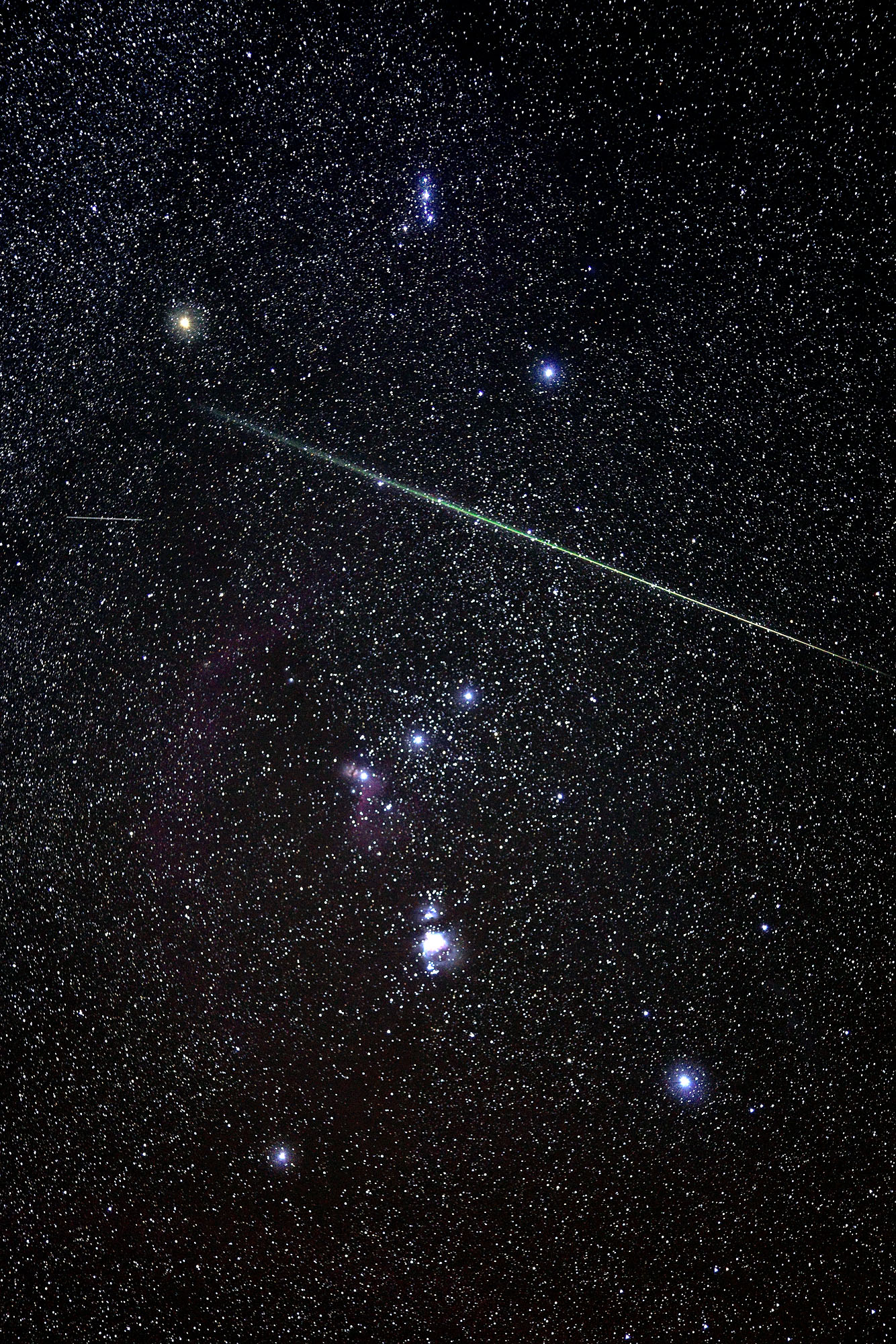A bright shooting stars of the Leonid meteor shower is falling through the Orion constellation.
Every 33 years, the Leonid’s are causing a cosmic firework with a meteor storm of more than 100.000 shooting stars per hour. The next occurrence will be in 2034. The Leonid’s are named after the constellation Leo from which they appear to radiate in all directions. The particles of this meteor shower originate from the comet Tempel-Tuttle.
-
A Leonid shooting star falls through the Orion constellation

